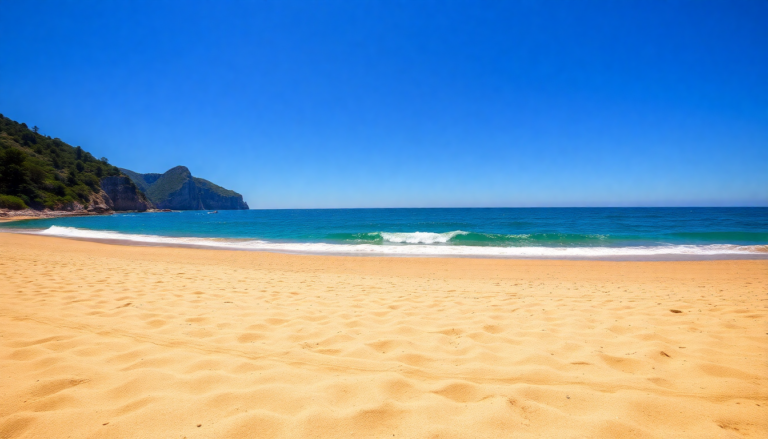Argomenti trattati
What if I told you that Italy, a country famed for its rich history and breathtaking landscapes, is also a champion of sustainable beach tourism? In 2025, Italy proudly boasts 246 blue flag locations, a testament to its dedication to environmental quality and excellence in beach services. This achievement is not merely a badge of honor but represents a rigorous commitment from local administrations, citizens, and tourism operators to maintain and enhance the beauty and cleanliness of their coastal areas.
The significance of the blue flag award
Established by the non-governmental organization Fee (Foundation for Environmental Education), the blue flag award is not just an annual accolade; it signifies a continuous journey of improvement. It encompasses over 30 regularly updated criteria, including water quality, waste management, and sustainable mobility. Interestingly, these flags are awarded to specific beaches rather than entire municipalities, emphasizing a targeted approach to environmental stewardship.
This year, the blue flag award has expanded its reach, with 246 locations proudly waving this prestigious flag—a noticeable increase from 236 in 2024. The Liguria region continues to lead the pack with 33 awarded locations, despite losing one municipality, Ceriale. Following closely is Puglia, with 27 awards thanks to three new additions, while Calabria has made significant strides, surpassing Campania with 23 flags as it shows positive growth in the southern regions of Italy.
Regional highlights and shifts in rankings
As we delve deeper into the state of Italy’s blue flag beaches, it becomes clear that the rankings have shifted in intriguing ways. Campania saw a slight decline, dropping to 20 blue flags, while the Marche maintained its status with 20 awards. Tuscany, on the other hand, climbed to 19, bolstered by a new entry. The results are promising for Sardinia and Abruzzo, each with 16 awarded locations, and while Sicily faced some losses, it retained 14 flags thanks to new recognitions. Meanwhile, Trentino-Alto Adige confirmed 12 municipalities, and Lazio rose to 11 with an additional location.
In total, the Emilia-Romagna region registered 10 locations, aided by a new entry, while Veneto remained steady with nine. Basilicata confirmed five, and Piemonte slipped to four following one exit. Interestingly, Lombardy held onto three municipalities, and Friuli-Venezia Giulia maintained its two flags from last year, alongside Molise. However, it’s notable that blue flags on lakes decreased to 22, with one municipality not renewing its recognition.
New entries and notable exits
The 2025 edition introduced 15 new awardees, showcasing the dynamic nature of the recognition process. However, five municipalities also dropped out of the running, highlighting the stringent evaluation methods employed, which include data gathered by local environmental agencies over the last four years, especially regarding bathing water quality.
To achieve a blue flag, locales must meet 32 evaluation criteria, covering various aspects from water quality to the presence of pedestrian areas and bike paths. This comprehensive assessment ensures that even popular destinations that may overlook sustainability are held accountable, pushing municipalities towards continuous self-evaluation and structural improvements in their environmental and tourism policies.
New sustainability action plans
For the first time, the 2025 edition mandated that all participating municipalities draft a sustainability action plan with objectives to be implemented and monitored between 2025 and 2027. I remember when I first encountered these plans during a trip to a coastal town; the local government was keen to showcase their initiatives aimed at combating climate change, and it was refreshing to see such proactive measures in action.
This plan requires municipalities to outline their current and future actions, detailing both initiatives already in place and those set for 2024. The aim is clear: to combat global warming and climate change, aligning with the goals set forth by the European Union and the 2030 Agenda. There are five primary intervention areas that municipalities are focusing on, ensuring a holistic approach to sustainability.
A community-driven approach
This action plan is a pivotal step toward a more integrated vision of local sustainability, placing the community at the heart of these initiatives. According to Claudio Mazza, president of Fee Italia, the growth of southern regions like Calabria, Sicily, and Puglia in the blue flag circuit signifies a positive shift towards embracing environmental policies and sustainable tourism development.
But there’s more to the blue flag program than just beaches; it also recognizes the most sustainable tourist docks under the “fishing and environment” project conducted in collaboration with the Ministry of Agriculture. In 2025, 84 docks received awards, reflecting a significant ecological evolution within the maritime sector, crucial for many Italian coastal economies.
Italy’s impressive blue flag statistics
With 487 awarded beaches, a slight increase from 485 in 2024, Italy holds a remarkable 11.5% of the world’s blue flags, reinforcing its leadership through a shared strategy involving institutions, local entities, and citizens. This percentage remains consistent with that of 2024, emphasizing the stability of Italy’s commitment to sustainable tourism.
The blue flag is not just an endpoint; it’s a pathway that becomes increasingly ambitious and conscious each year. As travelers, we should embrace these efforts, knowing that our seaside experiences contribute to a larger narrative of sustainability and environmental respect.

